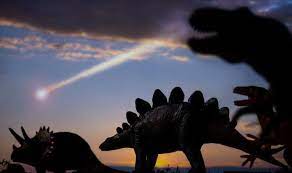CURRENT AFFAIRS
Get the most updated and recent current affair content on Padhaikaro.com
Sixth mass extinction
- IAS NEXT, Lucknow
- 18, Jan 2022

Reference News:-
The ongoing sixth mass extinction may be one of the most serious environmental threats to the persistence of civilisation, according to new research.
- Earth was once home to two million known species. According to the study, however, since 1500, as many as 7.5%-13% of these species may have been lost. That numbers anywhere from 150,000 to 260,000 different species.
What is the mass extinction of species?
Mass extinction refers to a substantial increase in the degree of extinction or when the Earth loses more than three-quarters of its species in a geologically short period of time.
So far, during the entire history of the Earth, there have been five mass extinctions.
Reasons and impacts:
- The five mass extinctions that took place in the last 450 million years have led to the destruction of 70-95 per cent of the species of plants, animals and microorganisms that existed earlier.
- These extinctions were caused by “catastrophic alterations” to the environment, such as massive volcanic eruptions, depletion of oceanic oxygen or collision with an asteroid.
- After each of these extinctions, it took millions of years to regain species comparable to those that existed before the event.
What is the sixth mass extinction?
The sixth, which is ongoing, is referred to as the Anthropocene extinction.
Researchers have described it as the “most serious environmental problem” since the loss of species will be permanent.
Why it is attributable to humans?
One of the reasons that humanity is an “unprecedented threat” to many living organisms is because of their growing numbers.
The loss of species has been occurring since human ancestors developed agriculture over 11,000 years ago. Since then, the human population has increased from about 1 million to 7.7 billion.
Changes occurred and occurring:
- More than 400 vertebrate species went extinct in the last century, extinctions that would have taken over 10,000 years in the normal course of evolution.
- In a sample of 177 species of large mammals, most lost more than 80 per cent of their geographic range in the last 100 years, and 32 per cent of over 27,000 vertebrate species have declining populations.
- Many of the species currently endangered or on the brink of extinction are being decimated by legal and illegal wildlife trade.
- Several species of mammals that were relatively safe one or two decades ago are now endangered, including cheetahs, lions and giraffes. There are as few as 20,000 lions left in the wild, less than 7,000 cheetahs, 500 to 1,000 giant pandas, and about 250 Sumatran rhinoceros.
Vulnerable regions:
- Tropical regions have seen the highest number of declining species. In South and Southeast Asia, large-bodied species of mammals have lost more than four-fifths of their historical ranges.
- While fewer species are disappearing in temperate zones, the percentage is just as high or higher. As many as half of the number of animals that once shared our planet are no longer here, a loss described as “a massive erosion of the greatest biological diversity in the history of Earth”.
What happens when species go extinct?
Impact can be tangible such as in the form of a loss in crop pollination and water purification.
If a species has a specific function in an ecosystem, the loss can lead to consequences for other species by impacting the food chain.
Effects of extinction will worsen in the coming decades as the resulting genetic and cultural variability will change entire ecosystems.
- When the number of individuals in a population or species drops too low, its contributions to ecosystem functions and services become unimportant, its genetic variability and resilience is reduced, and its contribution to human welfare may be lost.